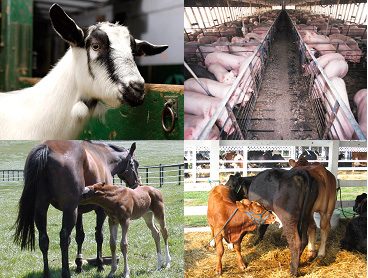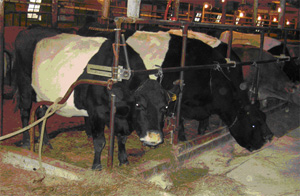The LPES Small Farms Fact Sheet series was prepared to inform the large, diverse population of small-scale animal producers about environmental stewardship and to provide the latest environmental information to educators and advisors. In this information, producers are encouraged to practice environmentally sound management with the goal of increasing the success of their animal operations. The series was developed by 20 national experts from 12 land-grant universities, the EPA National Ag Assistance Centre, MWPS and the USDA.
- Small-Scale Farmers and the Environment: How to be a Good Steward by Mark Rice, North Carolina State University
- Spanish version:Cómo proteger el medio ambiente en los ranchos y granjas pequeños por Mark Rice, North Carolina State University
- The ABCs of Pasture Grazingby Ben Bartlett, Michigan State University
- Spanish version:El abecé del pastoreo por Ben Bartlett, Michigan State University
- Manure on Your Farm: Asset or Liability? by Craig Cogger, Washington State University
- Protecting the Water on Your Small Farm by Joe Harrison, Washington State University
- Managing Animal Deaths: Your Options by Frank Humenik, North Carolina State University
- Got Barnyard Runoff? by Chris Henry, University of Nebraska-Lincoln, and Joe Harner, Kansas State University
- A Horse Owner’s Guide to Good Stewardship by Randall James, Ohio State University Extension
- Need a Vegetative Treatment System for Your Barnyard or Lot? by Chris Henry, Rick Koelsch, and Jason Gross, University of Nebraska- Lincoln, and Joe Harner,, Kansas State University
- The ABCs of Livestock Watering Systems by Ben Bartlett, Michigan State University
- The ABCs of Electric Livestock Fencing by Ben Bartlett, Michigan State University
- Nutrient Management–SIMPLIFIED! by Randall James, Ohio State University Extension
Small Farms Team Members
A national team of subject matter experts from land-grant universities, the EPA National Ag Assistance Center, MWPS, and the USDA collaborated in the development of the Small Farms Fact Sheet series.
- Mark Rice, North Carolina State University
- Ben Bartlett, Michigan State University
- Diane Huntrods, MWPS, Iowa State University
- Charlie Abdalla, Pennsylvania State University
- Jill Auburn, USDA
- Tommy Bass, University of Georgia
- Roy Bullock, Tennessee State University
- Craig Cogger, Washington State Universityv
- Denis Ebodaghe, USDA
- Carl Evensen, University of Hawaii
- Carol Galloway, EPA National Ag Assistance Center
- Doug Hamilton, Oklahoma State University
- Joe Harner, Kansas State University
- Joe Harrison, Washington State University
- Chris Henry, University of Nebraska-Lincoln
- Frank Humenik, North Carolina State University
- Jimo Ibrahim, North Carolina A&T
- Randy James, Ohio State University
- Rick Koelsch, University of Nebraska
- Ginah Mortensen, EPA National Ag Assistance Center
- Mark Risse, University of Georgia
- Marion Simon, Kentucky State University
The LPES Small Farms series was developed with support from USDA,U.S. EPA’s National Ag Assistance Center,and University of Nebraska Cooperative Extension at Lincoln, under Cooperative Agreement Number 2003-39490-14107.



